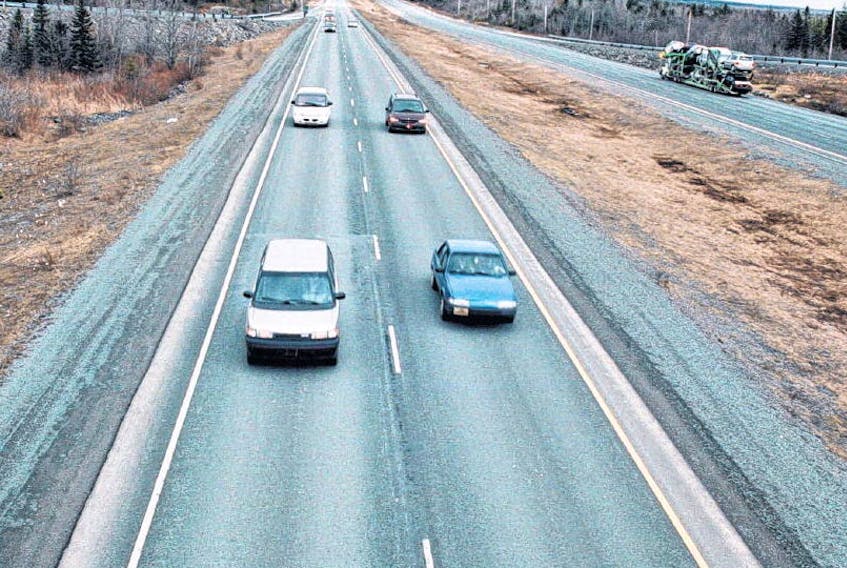Nova Scotia’s Move Over legislation makes unrealistic and potentially dangerous demands on motorists in the province, suggests a University of New Brunswick engineering professor and expert in highway safety.
In a recent email to The Chronicle Herald, Eric Hildebrand zeroed in on the controversial law requiring drivers to immediately slow down to 60 kilometres per hour when passing a pulled-over emergency vehicle with its emergency lights flashing.
Hildebrand, who has worked with provincial governments on improving highway safety, said motorists require adequate warning and time to adhere to such a dramatic decrease in speed — from 110 km/h to 60 km/h on some highways.
“I can add that for most work zones, the typical target is not to expect to slow down traffic by more than 20 km/h,” said Hildebrand. “It takes extraordinary measures (beyond regular signs) to achieve reductions greater than this (e.g., speed display units, photo-radar, etc.).”
Breaking the Move Over law comes with a hefty fine, ranging from $352.50 to $2,442.50, and Nova Scotia RCMP have been cracking down on violators.
Hildebrand said another layer of concern comes with the certainty that some drivers will comply while others won’t.
“A problem with a large speed drop is that you can often get a lot of variability in speeds. . . . Variability in speeds leads to increased risk.”
The law also requires drivers to move over to the closest unoccupied lane if safe to do so, which some opponents of the law say adds another element of potential danger.
Hildebrand said he’s also surprised that the legislation varies among Atlantic provinces.
Laws in New Brunswick and Newfoundland and Labrador instruct drivers to move over but only to slow down and proceed with caution. Only P.E.I. has legislation similar to Nova Scotia’s, requiring drivers to slow down to at least half the posted speed limit.
Sandy Marshall, a Lunenburgbased mechanical engineer, is in favour of the Atlantic provinces adopting one Move Over law that applies to the entire region. He wrote a letter to Nova Scotia’s Department of Transportation and Infrastructure Renewal in February, urging the province to take the lead. He said he has not received a response.
“My complaint is that there are three small, similar jurisdictions making up and enforcing their own particular rules for a common problem,” stated Marshall in the letter. “In the case of Nova Scotia and New Brunswick, applying them to a national highway with a national police force.”
Marla MacInnis, spokeswoman for the department, said there are no current discussionsabout harmonizing the legislation across theAtlantic provinces. Nor has the minister, Lloyd Hines, expressed interest in raising the speed limit.
Marshall also shared his own hair-raising experience with the Move Over law. The recent incident occurred on Highway 103 near Mahone Bay. After spotting a pulled-over police vehicle, he said he slowed down before traffic quickly became congested and narrowly avoided a head-on collision.
“I feel I did most things correctly. But it was busy, confusing, and potentially more dangerous than it needed to be.”
NDP Sackville-Cobequid MLA Dave Wilson first proposed the law in the legislature in 2003 and pressed on until it was passed six years later. The former paramedic said the speed limit of 60 km/h was decided on after consulting with emergency responders in the province.
The Department of Transportation and Infrastructure Renewal could not provide evidence to show that the law has made it safer for emergency responders working on Nova Scotia roadways.









